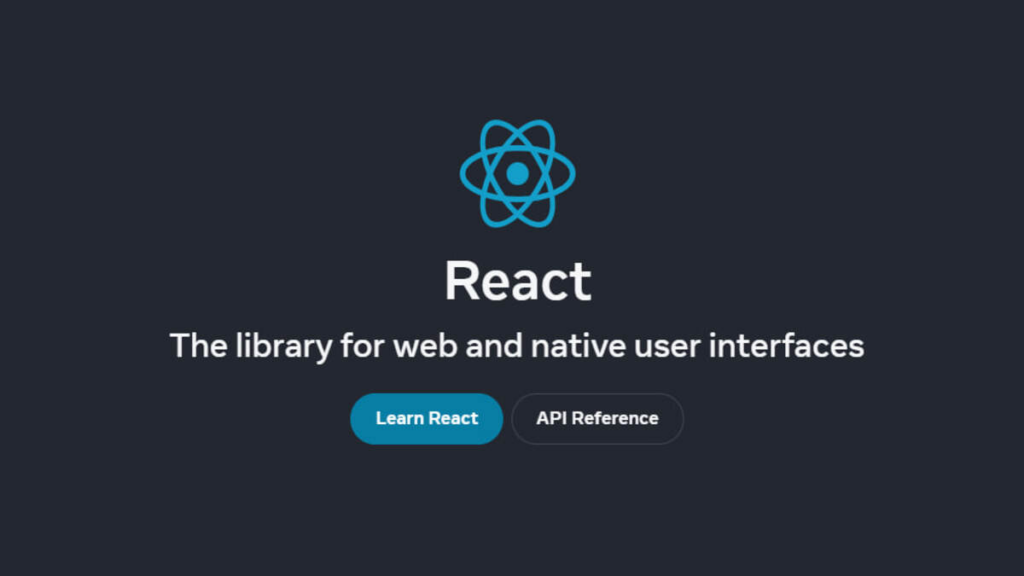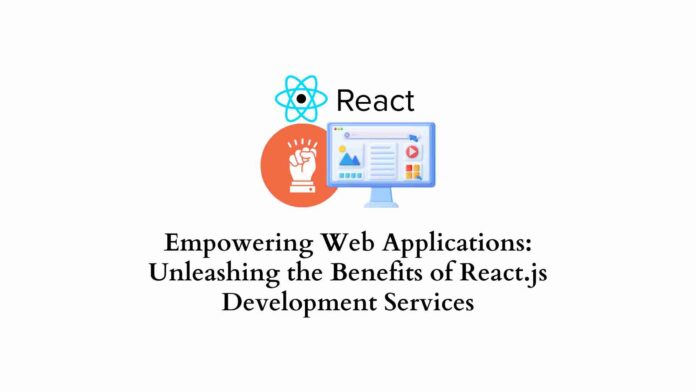Last updated - November 22, 2023
Many organizations need help with the requirement for responsive and scalable web apps that can manage large traffic and user interactions. According to a recent survey, 53% of mobile users usually quit an app that takes more than 3 seconds to launch.
If you want to create a web application, consider React.js, as it is an excellent choice for your software project. React.js can assist you by offering a quick and efficient framework for developing high-performance apps.
In this article, we’ll review some of the main reasons you should choose React.js development services for your digital project.
What is React.js?


Facebook launched React in 2013, and it has grown in popularity. Since then, React.js has become one of the most widely used frameworks for developing modern web apps.
React.js is an extremely powerful JavaScript tool for creating user interfaces.
It is declarative, component-based, and simple for beginners to comprehend. The simplicity of React is one of the reasons for its success. It allows you to construct reusable elements that you can use in multiple spots across your code. This makes your code flexible and scalable.
Additionally, React.js has a large community. With several developer tools and frameworks accessible, these people are always glad to help and share some advice.
Why Create a Web Application Using React.js?
React.js is vital to the development of effective web apps. It is a common pick among developers due to its robust features and flexible design. Let’s look at the key functions that React.js performs when developing online apps.
- Component-based architecture. The component-based design of React.js allows developers to split down the user interface into several independent yet fully operational components. This approach reduces the complexity of development, maintenance, and testing, resulting in a more efficient and flexible system.
- Virtual DOM. React.js employs a virtual document object model (DOM) that efficiently updates and displays the most essential components when changes happen. This strategy reduces the time and resources necessary to update the real DOM, resulting in increased performance and quicker rendering.
- Reusability. React.js supports component reusability, allowing developers to create a library of their reusable interface elements. This reduces development time, improves code sustainability, and provides consistent user experiences within the program.
- Data binding. React.js employs a one-way data binding strategy, in which data travels in one direction. The approach makes debugging and comprehending how data changes through the application easier. This streamlines the development process and lowers the chances of errors and unexpected behavior.
- Efficient workflow
An extensive ecosystem of the most cutting-edge development tools and libraries supports Reac.js, and there is ongoing community support. This allows developers to use various tools, including React DevTools, Redux for state management, and React Router, to improve the development workflow and increase productivity. - SEO-friendly. Compared to previous JavaScript frameworks, React.js enables server-side rendering (SSR) and static site creation, making it more SEO-friendly. Search engines may quickly crawl and index the information using SSR, increasing search engine visibility and SEO effectiveness.
- Cross-platform. React.js enables code reuse across web, mobile, and desktop platforms. Developers can use their current React.js expertise and codebase to create native iOS and Android mobile apps, saving time and effort.
- Community support. It has a solid and active developer and enthusiast community. This means that excellent materials, lessons, and documentation are available on an ongoing basis, as well as regular updates and problem solutions. Furthermore, React.js is a dependable and future-proof solution for software development services because large corporations frequently use it.
Main Challenges When Working with React.js


Despite its numerous advantages, React.js does have certain drawbacks. It is critical to consider these when developing your web app.
- When it comes to React.js, the Internet provides a goldmine of information. However, because certain materials are missing or incomplete, getting full data from official sources may be difficult. As a result, developers may need to conduct substantial research to gain the necessary skills for creating code or exploiting new features. Additionally, encountering solutions for particular obstacles within the official React.js documentation could pose a significant challenge.
- Another disadvantage is that React.js is a JavaScript library rather than an independent framework such as Angular or Vue.js. When using a framework, software developers should follow a specific format. Frameworks offer the benefit of similarity, allowing any developer to quickly join a development team and start working on a project.
In spite of the aforementioned issues, React.js is anticipated to secure the position of the second most used web framework for developers in 2023.
When to Start Using React.js?
So, how do you decide whether employing React.js in your web development project is appropriate? Here are some scenarios in which React.js may be useful.
Complex user interfaces
React is particularly competent at managing complicated interfaces. React.js may assist you in creating a responsive and smooth user experience if your online application has dynamic and/or interactive features, such as real-time updates or data visualization.
Large-scale applications
The modular and reusable code facilitated by React’s component-based architecture empowers you to effectively expand your web application as your business progresses. As a result, React is an excellent choice for designing large-scale systems requiring reliability, scalability, and customization.
High-performance applications
React’s fast rendering technology and optimized virtual DOM allow you to manage massive amounts of data and complicated interfaces without slowing down your PC or Mac.
React’s modular architecture also enables efficient code organization, making it easier to maintain and scale high-performance applications in the long run.
Additionally, React’s extensive ecosystem of libraries and tools provides developers with a wide range of options for optimizing performance and enhancing user experience in high-performance applications.
Cross-platform applications
React is a flexible framework for cross-platform development since it is widely used to construct web, mobile, and desktop apps. React Native, a React-based framework is built primarily for mobile app development. On the other hand, React Desktop allows you to construct desktop apps implementing several web-based technologies.
With React’s support for platform-specific components and APIs, developers can create seamless user experiences across web, mobile, and desktop applications while maintaining a consistent codebase.


Furthermore, React’s cross-platform capabilities enable developers to reuse code across different platforms, resulting in faster development cycles and increased productivity.
Conclusion
React.js has evolved into one of the most popular online application frameworks. Many businesses, from small startups to large corporations, have used this tool because of its adaptability and simplicity. While React.js is inappropriate for every project, it is an excellent solution for many online apps.











